#Fox Movietone
Text
Reel News
Above: Newsreel cameramen perch on boards resting on a windowsill to get a birds-eye view of a passing parade, circa 1930. (Public Domain Image)
We marvel at, and sometimes decry, today’s instantaneous news coverage of wars, disasters and the like, but ninety years ago newsreel crews did a remarkable job of filming and delivering the latest news to thousands of theaters across the U.S. and around…
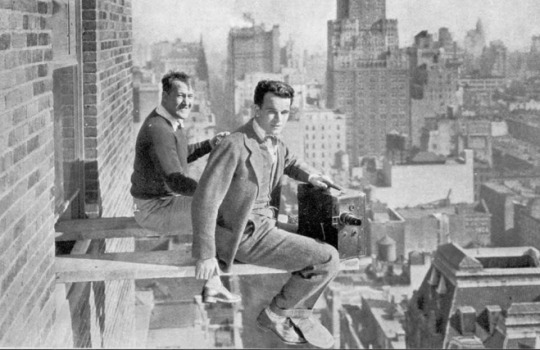
View On WordPress
#Alan Dunn#Arnold Hall#Barbara Shermund#E. Simms Campbell#Fox Movietone#George Price#Georgia Engelhard#Gluyas Williams#Harry Brown#James Thurber#Long Island Motor Parkway#Morris Markey#Movietone newsreels#Ned Hilton#Otto Soglow#Peter Arno#Richard Decker#Robert Day#SS Morro Castle#William Kissam Vanderbilt II
0 notes
Photo
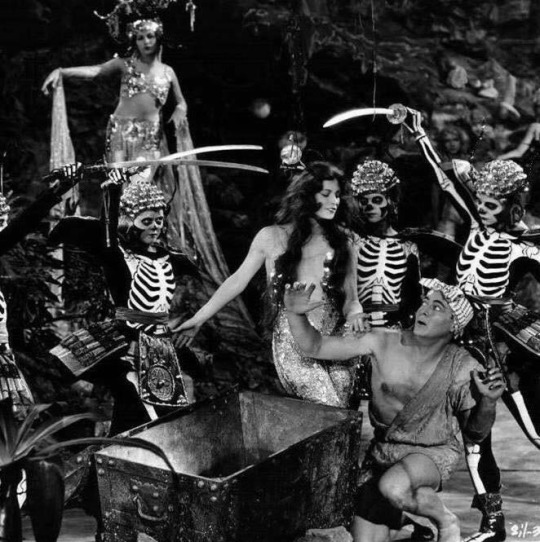
Fox Movietone Follies of 1929 (1929)
76 notes
·
View notes
Text

FOX MOVIETONE NEWS.
La Cinématographie Française, March 11, 1950.
4 notes
·
View notes
Text
Happy Service Day H220 ‘Heavy Harry’!
On this day, the seventh of February 1941, Victorian Railways H-Class 4-8-4 (Pocono) H220 "Heavy Harry" was launched at the Newport Workshops, making this his 83rd birthday.
Below is a Fox Movietone cine-reel of that day (no sound).
youtube
youtube
This above is the only color footage that exists of H220 while he was in service.
youtube
And now a few docos...
youtube
youtube
And a poem, from the official Victorian Railways Newsletter, May 1958 after his withdrawal from service.

Here's to you Heavy Harry; the last remaining three cylinder 4-8-4 tender engine in the world (edited to include : thank you @galushanationalrailways for pulling me up on that error, I have no idea how I shaded that, sorry!) , the first and last of the H-class, the biggest, heaviest engine in Australia; who shook the earth as he ran and the thunder of his passing was like onto a great wind...
#Victorian Railways#real locomotives#Victorian H-class Pocono H220 “Heavy Harry”#Heavy Harry Service Day 7/2/1941#VR H-Class Pocono H220 “Heavy Harry”
17 notes
·
View notes
Text
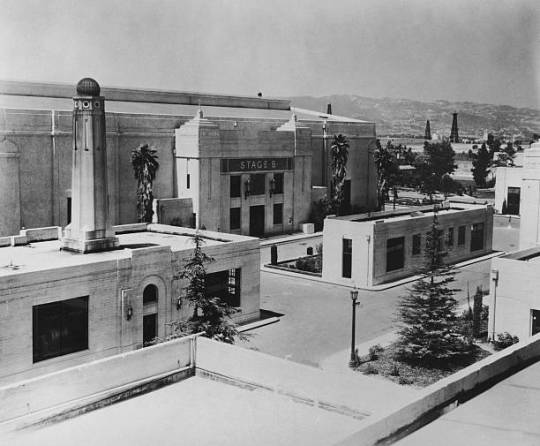
Fox Movietone Studios in West Los Angeles, 1929.
13 notes
·
View notes
Text
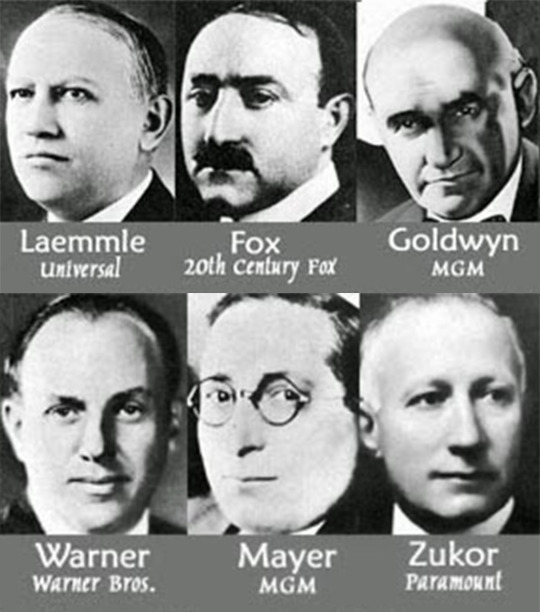
22 Adar - The Jews of Hollywood - 1927
On this day in 1927, The Fox Film Corporation gave its first demonstration of the process that it would use for a new feature, Movietone News, that would allow filmgoers to see and hear scenes from recent events. Fifty reporters were escorted into Fox-Case's New York studios at 10:00 that morning and filmed. Four hours later, the same group saw and heard themselves when the film of the press conference was screened.
Fox Film Corporation was founded by William Fox. Born Wilheim Fuchs along with the founders of MGM, Paramount, Warner Bros., Universal, and Colombia Picture he was part of a small group of top-level Jewish-born entrepreneurs who fashioned Hollywood. Besides their professions, they practically all fit the same profile: 2nd generation Americans from observant Eastern European Jewish homes all abandoning the traditions of their youth.
It was not a coincidence that the first talking movie out of Hollywood was the Jazz Singer, produced by Warner Bros. The movie is the story of the son of a Jewish cantor, played by Al Jolson, whose father kicks him out of the house because he wants to become a jazz singer. In the process, he falls in love with a non-Jewish woman. The “happy ending” is when he returns home to chant the Kol Nidrei service with his mother and gentile girlfriend watching admirably, and subsequently, his mother comes to watch him perform on Broadway. The movie was quite auto-biographical for Jolson and the group of Jewish filmmakers. The movie was later remade twice. Once starring Jerry Lewis and once Neil Diamond. Again, quite an autobiographical role.
Rabbi Pinchas L. Landis
#jew#jewish#jewishart#jewishcommunity#jewishculture#jewishfood#jewishgirl#jewishhistory#jewishholidays
15 notes
·
View notes
Text
Simon Böske (a. k. a. Miss Europe 1929) egy amerikai filmhíradó kivágott jeleneteiben. (Feltehetőleg a verseny után Párizsban.)
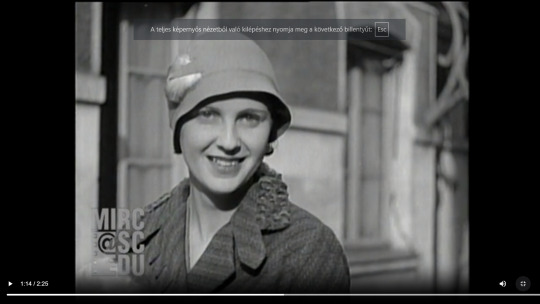
Kedvenceim:
fickó: "I hope you have a nice trip in America and many success!"
Böske: *mosolyogva a kamerába néz* Elég volt....na?
2. Böske: Köszönöm szépen, nagyon éhes vagyok. Menjünk haza, most már egész komolyan elég volt, ugye?
6 notes
·
View notes
Photo
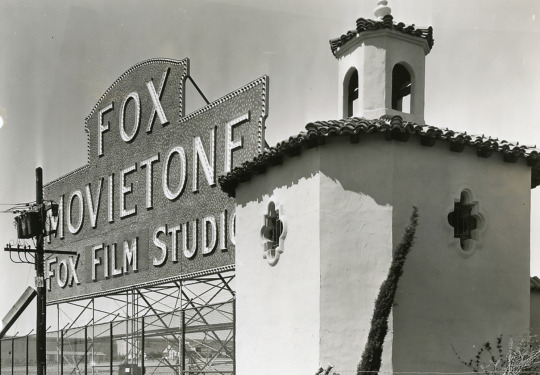
Fox Movietone Fox Film Studio
9 notes
·
View notes
Text
youtube
With thanks to the Moving Image Research Collections. University of South Carolina.Filmed on December 31, 1928.Society snowball fight–outtakes. (Fox Movietone News Story 4-819.) Fox Movietone News Collection.
4 notes
·
View notes
Text
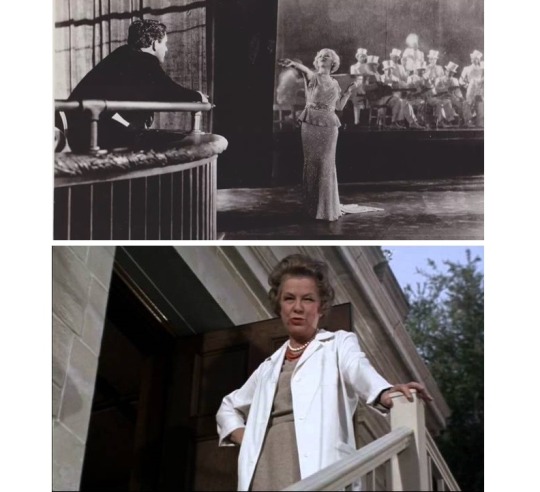

6 April 2024
Film: MAN’S CASTLE (dir. Frank Borzage, 1933, USA); THE DISORDERLY ORDERLY (dir. Frank Tashlin, 1964, USA); and
LIGHT NEEDS (dir. Jesse McLean, 2023, USA)
Forum: Wisconsin Film Festival Format: Various formats
Observations: We haven't been to Madison, WI to see a film since 2018. We booked three films at the festival taking us from 11am-6pm. MAN'S CASTLE (screened in 4K) appeared in a newly restored version that added several minutes of previously lost dialog. (It was preceded by several lovely Fox Movietone outtakes of footage taken in Wisconsin in the 1920s and 30s, with David Drazin accompanying on piano.) THE DISORDERLY ORDERLY - the final collaboration of Frank Tashlin and star Jerry Lewis - was shown in a privately-owned 35mm IB Technicolor print, a seldom-projected preview print slightly different from the release version. In between, we saw a collection of shorts related to botanical themes, the centerpiece of which was a feature-length documentary about the relationship of humans with houseplants (LIGHT NEEDS). Only the Tashlin film seemed slightly underattended; sixty years later, many folks still do not get Lewis.
#cinema#movie#film#american film#frank borzage#Jesse McLean#frank tashlin#2023#1964#1933#Man's Castle#The Disorderly Orderly#Light Needs
0 notes
Photo

In association with Fox Movietone News comes an ode to the best year EVER, performed by the super-popular mega-group Groverz' Cornerz'.Subscribe to Madatoms ...
0 notes
Text
'In the third act of Oppenheimer, the father of the atomic bomb sits in a darkened hall and watches a slide show of what his gadget hath wrought at ground zero. From offscreen space, the lecturer clinically describes what we in the audience are spared from looking at.
The decision by director Christopher Nolan not to show the Japanese victims that should be in Oppenheimer’s field of vision has been both roundly criticized (Brandon Shimoda, curator of the Hiroshima Library, called it a “demoralizing” absence that “makes unreal the experience of Asian people”) and stoutly defended (in The Los Angeles Times, film critic Justin Chang responded, “omission is not erasure”).
Whatever your take, Nolan’s political/aesthetic choice presumes viewers are unspooling the pictures in their own mind. Compared to the newsreel record of the Holocaust, the visual imprint of the victims of Hiroshima and Nagasaki has not been seared as indelibly into the popular imagination. For most of the Cold War, the motion picture evidence of the impact of atomic weaponry on humanity was memory-holed by squeamish media gatekeepers and restricted by the U.S. government. Only a few glimpses slipped through the cracks.
In 1945, Americans should have seen the victims of the atomic bombings in the newsreels, the screen journalism of the pre-television, pre-digital age. Throughout the classical Hollywood era, the newsreels were an integral part of what exhibitors called “the balanced program,” playing at the top of a film menu that included a cartoon, a comedy short, and a feature-length attraction. Five studio-affiliated newsreels released two issues per week, each running about eight to 10 minutes in length: MGM’s News of the Day, RKO’s Pathé News, Fox Movietone, Universal Newsreel and Paramount News.
When the atomic bombs were detonated over Hiroshima (Aug. 6, 1945) and Nagasaki (Aug. 9), newsreel editors were caught flatfooted. Of course, they were given no prior notice of the use of the top-secret weapon, but the military had prepared elaborate press releases for newspapers and radio (CBS broke in with a bulletin at 11:15 a.m. on Aug. 6, NBC two minutes later). The newsreels scrambled to play catch up. Camera crews descended on the sites revealed to have played the key roles in the Manhattan Project — Oak Ridge, Tennessee; Richland, Washington; and Los Alamos, New Mexico — but they were forbidden access by still-wary authorities. Not until Aug. 21, 1945, did the military provide some 80 feet of film (close to a minute) of the atomic bomb blast at Trinity on July 16. “The explosion, the greatest to be caused by mankind in all history — up to the time the two atomic bombs were dropped on Japan — makes one of the most spectacular screen scenes ever filmed,” said Showman’s Trade Review.
On Sept. 15, the first films of what News of the Day called “atom-bombed Japan” finally reached newsreel screens. The footage showed the flattened landscape of Hiroshima, more obliterated even than Berlin and Tokyo, first from the aerial perspective of a B-29 and then from the ground, where a few Japanese civilians walk dazed through the ruins. The narration is blunt about the scale of the devastation and the number of causalities, but no images of the dead and wounded are screened. “Latest reports from the Japanese say 126,000 died as a result of the damage done by the single bomb that blasted the city,” reported Universal Newsreel announcer Ed Herlihy. “For many days after the actual bombing, thousands continued to die of burns and shock.”
Universal credited the footage to commercial newsreel and Army Air Force cameramen, but Japanese camera people were also on the scene in the immediate aftermath of the blasts documenting the backfire on their countrymen. They took some two hours and 40 minutes of motion picture footage, all of which was confiscated by U.S. Occupation forces. According to Edith Lindeman, film critic for the Richmond Times-Dispatch, writing in 1946, “the pictures were developed and readied for general consumption,” but government and military authorities soon had second thoughts. “Shots of dismembered bodies, piles of dead animals, and [of] a man whose body had been blown flat into a concrete road where it was imbedded by the blast” were so appalling that officials feared that American public might withdraw support for the testing of future atomic bombs.
A year later, however, on the first anniversary of the blasts, the U.S. government had third thoughts and released the footage to the newsreels. The newsreel editors were not unanimously receptive. Three of the outfits — News of the Day, Pathé and Fox Movietone — deemed the footage “too gruesome” to show to moviegoers settling in for an evening’s entertainment. Only Universal Newsreel and Paramount News opted to use the footage.
That same week, the military also released footage of the underwater atomic test near Bikini Atoll in the Marshall Islands, conducted on July 25, 1946, an awesome spectacle documented by 300 cameras (and later repurposed by Stanley Kubrick at the end of 1964’s Dr. Strangelove). The back-to-back coupling of the two segments — Bikini and Hiroshima, the shape of things to come followed by the human fallout — made for a grim all-atomic episode. Usually, the newsreels tried to soften even the harshest news at the top of the issue with a back-end clip of fashion or sports. Not this week.
The Universal Newsreel segment incorporated scant seconds of the Hiroshima victims, but Paramount lived up to its slogan as “the eyes and ears of the world.” The nine-minute issue (“Atom Bombs!” is the exclamatory title) devotes about half its running time to an unblinking look at the Japanese victims. (The news reel of Paramount News issue 99 is not currently available online; I viewed it with the help of multiple archivists...)
“One year has passed since the first atomic bomb changed the course of civilization,” reads the introductory title card. “This film report — of pictures just released from Hiroshima and the underwater Bikini test — highlights the new world crisis unleashed by the most terrible destructive force in history.” Offscreen narrator Maurice Joyce, the voice of Paramount News, takes over with an awed after-action report on the Bikini blast, noteworthy not just for the frame-filling, ballooning mushroom cloud (shown twice, from two different camera angles) but because the clip allots a full 30 seconds of tension to counting down the moment of detonation. Sailors aboard ships anchored near ground zero would have met “a terrible atomic death,” he says, a remark that serves as a transition to what “one year ago swept down on Hiroshima.”
The shift to “Hiroshima, August 6, 1945” is signaled by the clang of a Shinto temple gong on the soundtrack. First, we see a peaceful modern city before the blast and then a postapocalyptic vista of rubble. “This is how Hiroshima looked after the blast. Four and a half square miles almost completely burned out.”
The final title card asks the question of the moment: “In light of these shocking films, the world faces a life-and-death question: CAN WE CONTROL ATOMIC POWER?”
Engaging in the kind of overt editorializing that the newsreels almost always avoided, Joyce demands an answer. Yet even with the stakes being nothing less than the future of mankind, politicians remain “deadlocked” and “the same old balance of power maneuvering continues.” At the close, the clip reprises the images from the Bikini explosion and Joyce signs off with a warning, “Unless there is complete agreement on the bomb, we may as well build our cities under the Earth and get ready for armageddon.”
The commentary was written by Paramount editor and future Time magazine film critic Weldon Kees, who felt he had done a good job of work that day. The newsreel “with the Bikini test and the Japanese films turned out amazingly well,” he wrote his parents back in Beatrice, Nebraska. “It is no doubt one of the best newsreels ever released.”
Senior management at Paramount News agreed. On Aug. 9, 1946, the outfit invited newspaper and trade press critics to a special screening of the issue at its New York headquarters. “The screen is the only real medium that adequately brings home the horrors of the bomb and it has done so indeed in this reel,” said Curtis Mitchell, Paramount’s director of advertising and publicity. “I hope it is shown in every theater in the world.”
That kind of saturation was unlikely. Most motion picture exhibitors were locked into contracts with one of the five newsreel companies. Though not a hard and fast rule, Fox-owned and-affiliated theaters tended to show Fox Movietone newsreels and so on. Thus, Paramount’s newsreel was screened in Paramount houses and by some independent exhibitors who had the freedom to mix and match. Paramount’s unique hard news scoop was also welcomed in all-newsreel houses, a circuit of venues in the major cities that played a one-hour program composed entirely of newsreels and short documentaries. “See Casualties and Damage by 1st A-Bomb!” urged the Tele News Theater in San Francisco. The Trans-Lux Theater in New York highlighted the Paramount clips in a similarly gruesome way. Still, even if you were an avid moviegoer in 1946, chances are less than even that you would have seen the Paramount News footage.
Viewers who did see the Paramount footage were stunned and sickened. “This clip becomes a real shocker because of the previously unseen shots of the devastation wrought on human beings by the atom bomb on Hiroshima,” wrote Jack D. Grant in The Hollywood Reporter in August 1946. (Tellingly, critics often resorted to the biblical verb “wrought” to describe the atomic visitation.) “Radioactive rays burned the pattern of one woman’s dress on her skin. Others were scarred and blinded in the most hideous manner. No punches are pulled in showing any part of the devastation. There are closing shots of school children, still disfigured a full year after Hiroshima.”
At Motion Picture Daily, critic Herb Loeb was especially distraught. “The scarred, burned, and maimed people caught by the Japanese camera at the height of their anguish forms a burning indictment against the use of the atomic bomb by any civilized country,” Loeb wrote. All agreed, in the words of Chester B. Bahn, editor of the Film Daily, that the Japanese “clips belong on every screen not only in the U.S. but throughout the world as a solemn warning to all peoples that it is indeed later than they think.”
That same month, with the exhilaration of V-J Day no longer at fever pitch, other media were also reckoning with the human cost of the bombs that ended World War II. On Aug. 9, the monthly screen magazine the March of Time released a timely issue titled “Atomic Power,” a science lesson that was more cautionary than celebratory. It opened with the mushroom cloud from Trinity and shots of what remained of Hiroshima, though no victims were in sight. In a testament to the unmatched cultural cachet conferred by the March of Time series, the scientists and bureaucrats instrumental in the Manhattan Project — including Albert Einstein and J. Robert Oppenheimer — obligingly reenacted their roles for the cameras, “We’ll know in 40 seconds,” says [the real] Oppenheimer, playacting the countdown on that fateful morning. Also in August 1946, The New Yorker published John Hersey’s issue-long essay “Hiroshima,” which evoked in prose what Paramount News projected on film.
After the surge of attention in August 1946, the footage lay dormant for more than two decades. Unlike the Holocaust footage, which was unspooled incessantly in documentaries on Nazism and in feature films such as Orson Welles’ The Stranger (1946), Sam Fuller’s Verboten! (1959) and Stanley Kramer’s Judgment at Nuremberg (1962), the newsreel footage from Hiroshima and Nagasaki was not resurrected by Hollywood initially. Cultural historian Greg Mitchell, author of The Beginning of the End: How Hollywood — and America — Learned to Stop Worrying and Love the Bomb, argues that the absence was not happenstance. “The United States engaged in airtight suppression of all film shot in Hiroshima and Nagasaki after the bombings,” in a concerted campaign he calls “The Great Hiroshima Cover-Up.”
Photographs in the print press were not as easily shut down. On Sept. 29, 1952, Life magazine, under the headline “When Atom Bomb Stuck — Uncensored,” published a six-page spread of “scratched and dusty photographs” that, after being “suppressed by jittery U.S. military censors,” had recently “struck Japan with the impact of a delayed fuse bomb.” Letters poured in from shocked readers thanking the magazine for publishing “those terrible pictures.” With a readership at the time of around 25 million, the Life magazine spread probably attracted more eyes than the Paramount News issue.
The cinematic embargo was largely broken with Alain Resnais’ French-made, Hiroshima-set Hiroshima Mon Amour (1959, U.S. release May 1960). To wit: Hideo Sekigawa’s Hiroshima (1953, U.S. release May 1955), a harrowing docudrama about the aftermath of the bombing, received only limited art house distribution in the U.S.
At the top of Hiroshima Mon Amour, before the action veers off into more familiar nouvelle vague territory, the art house crowd was escorted through the displays in the Hiroshima Museum and saw (many doubtless for the first time) clips from the Japanese-shot newsreels. The contrast between the forefronted romance and the newsreel background, wrote Richard Gertner in Motion Picture Daily, “makes plain the horror of Hiroshima as no film on the subject has done before.”
In 1968, the existence of the long-buried footage came to the attention of Columbia University professor and pioneering media scholar Erik Barnouw. He contacted the Department of Defense and asked about the films. He was told the cache had recently been turned over to the National Archives, which furnished Barnouw with copies. Finally, U.S. officials “agreed with the intention to display to the general public the horrors of nuclear warfare,” reported Variety in 1970.
Working with Columbia University colleague Paul Ronder, Barnouw winnowed down the Japanese footage into a 16-minute short titled Hiroshima Nagasaki August, 1945. Hunched over a Steenbeck editing bed, Barnouw was stricken by what he saw, but confessed that it would be dishonest of him to say that in 1945 he greeted the news of the atomic bombings with anything other than relief. “It seemed to end the war very quickly,” he said.
Hiroshima Nagasaki August, 1945 is low-key, bare-bones and devastating. “Eyes turned up to the bomb melted within nine seconds,” narrator Ronder intones, his voice flat and matter of fact. ”One hundred thousand people were killed or doomed and 100,000 more injured.” On Feb. 19, 1970, Hiroshima Nagasaki August 1945 was first screened publicly in the United States at the Museum of Modern Art before what UPI called “a group of horrified spectators.” Seeking a wider audience, Barnouw and Ronder approached the transmission belt that had replaced the newsreels.
However, like three of the newsreel outfits in 1946, the three U.S. television networks refused to interrupt prime time programming with wartime horror. ABC and CBS declined to comment on the decision; NBC said the network was “waiting for a news peg.” The sudden skittishness — from network executives currently broadcasting the Vietnam war into American living rooms — did not go unremarked. “The most important documentary film of this, and perhaps any previous century, is being seen only by a select few,” complained the Boston Globe. “Surely [the networks] can find 16 minutes of prime time to show Americans what the first A-bombs, puny by [comparison to] today’s weapons, did to people and property 25 years ago!”
National Educational Television (NET), the ancestor of the Public Broadcasting System, seemed the next best forum for the film, but NET also claimed the footage contained “little that is new about it” and said it “doesn’t plan to show it.” However, under pressure from its outraged demographic, NET quickly reversed course. On Aug. 3, 1970, it telecast Hiroshima Nagasaki August, 1945 as part of an hourlong special. An ad in The New York Times described the footage as “never before shown on nationwide TV.”
Thereafter, Hiroshima Nagasaki August 1945 circulated widely. Within the year, Columbia had sold over 500 prints in 16mm, mostly to universities, libraries and peace groups. Sometimes writer-narrator Paul Ronder would attend a public screening. The response from audiences was always the same. “There is never any applause, always a sort of hush,” he said. “Then people stand up, find it hard to talk to one another, then sort of drift away.”'
#Hiroshima Nagasaki August 1945#Oppenheimer#National Educational Television#Christopher Nolan#The Manhattan Project#Los Alamos#Hiroshima Mon Amour#Albert Einstein
0 notes
Text
Events 7.23 (before 1950)
811 – Byzantine emperor Nikephoros I plunders the Bulgarian capital of Pliska and captures Khan Krum's treasury.
1319 – A Knights Hospitaller fleet scores a crushing victory over an Aydinid fleet off Chios.
1632 – Three hundred colonists bound for New France depart from Dieppe, France.
1677 – Scanian War: Denmark–Norway captures the harbor town of Marstrand from Sweden.
1793 – Kingdom of Prussia re-conquers Mainz from France.
1813 – Sir Thomas Maitland is appointed as the first Governor of Malta, transforming the island from a British protectorate to a de facto colony.
1821 – While the Mora Rebellion continues, Greeks capture Monemvasia Castle. Turkish troops and citizens are transferred to Asia Minor's coasts.
1829 – In the United States, William Austin Burt patents the typographer, a precursor to the typewriter.
1840 – The Province of Canada is created by the Act of Union.
1862 – American Civil War: Henry Halleck becomes general-in-chief of the Union Army.
1874 – Aires de Ornelas e Vasconcelos is appointed the Archbishop of the Portuguese colonial enclave of Goa, India.
1881 – The Boundary Treaty of 1881 between Chile and Argentina is signed in Buenos Aires.
1900 – Pressed by expanding immigration, Canada closes its doors to paupers and criminals.
1903 – The Ford Motor Company sells its first car.
1908 – The Second Constitution accepted by the Ottomans.
1914 – Austria-Hungary issues a series of demands in an ultimatum to the Kingdom of Serbia demanding Serbia to allow the Austrians to determine who assassinated Archduke Franz Ferdinand. Serbia accepts all but one of those demands and Austria declares war on July 28.
1919 – Prince Regent Aleksander Karađorđević signs the decree establishing the University of Ljubljana.
1921 – The Chinese Communist Party (CCP) is established at the founding National Congress.
1926 – Fox Film buys the patents of the Movietone sound system for recording sound onto film.
1927 – The first station of the Indian Broadcasting Company goes on the air in Bombay.
1936 – In Catalonia, Spain, the Unified Socialist Party of Catalonia is founded through the merger of Socialist and Communist parties.
1940 – The United States' Under Secretary of State Sumner Welles issues a declaration on the U.S. non-recognition policy of the Soviet annexation and incorporation of three Baltic states: Estonia, Latvia and Lithuania.
1942 – World War II: The German offensives Operation Edelweiss and Operation Braunschweig begin.
1942 – Bulgarian poet and Communist leader Nikola Vaptsarov is executed by firing squad.
1943 – The Rayleigh bath chair murder occurred in Rayleigh, Essex, England.
1943 – World War II: The British destroyers HMS Eclipse and HMS Laforey sink the Italian submarine Ascianghi in the Mediterranean after she torpedoes the cruiser HMS Newfoundland.
1945 – The post-war legal processes against Philippe Pétain begin.
1 note
·
View note
Text
https://momentsinourhistory.quora.com/Melva-Cornell-in-a-publicity-photo-taken-nearly-100-years-ago-for-the-film-in-which-she-is-recorded-to-have-appeared-F
https://momentsinourhistory.quora.com/Melva-Cornell-in-a-publicity-photo-taken-nearly-100-years-ago-for-the-film-in-which-she-is-recorded-to-have-appeared-F https://momentsinourhistory.quora.com/Melva-Cornell-in-a-publicity-photo-taken-nearly-100-years-ago-for-the-film-in-which-she-is-recorded-to-have-appeared-F?ch=15&oid=111767927&share=debe01cb&srid=7KVRc&target_type=post
0 notes
Text
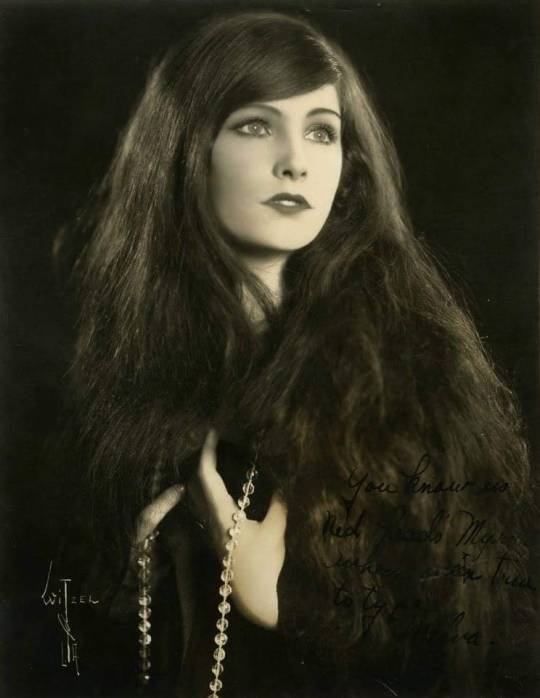
Looking so very modern, this is Melva Cornell in a publicity photo taken almost 100 years ago - for the only film she ever appeared - Fox's Movietone Follies of 1929. The film is now lost, destroyed in the infamous vault fire of 1937. Despite her beauty, Cornell never made it in films, and instead worked behind the scenes. She died in 1960.
1 note
·
View note
Text
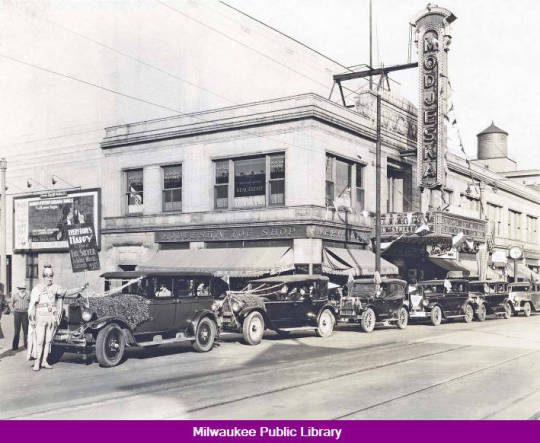
Parades! Milwaukeeans have always enjoyed them, whether it was this summer's grand productions or the more modest spectacle of Oct. 13, 1929, pictured here. A long line of decorated automobiles led by an outlandishly costumed, crowned gentleman opened the local celebration of the Fox Film Corp's. Silver Jubilee Week. They're passing the Modjeska Theater on 12th and Mitchell Sts., which on that Sunday offered "Street Girl." The movie starred Betty Compson, the all-talking comedy "Broadway Blues," Fox Movietone news and violinist Jan Rubini on stage. The trade newspaper Variety described "Street Girl" as a "good coin clicker." John and Thomas Saxe, local moviehouse pioneers, opened a Modjeska Nickelodeon, named after the popular Polish-American actress Helena Modjeska (1840-1909), on Mitchell St. in 1910. Their second, grander Modjeska, still in operation, opened on the same site in 1924. It became part of the Fox chain in 1927. Milwaukee's rejoicing over William Fox's early success in movies would be brief. Eleven days later, on Oct. 24, the stock market began to topple, crashing on Oct. 29. By Nov. 13, a month after those smiling people in their fine cars followed the banner proclaiming "everybody's happy," $30 billion in stocks had been wiped out. Another $45 billion, plus millions of jobs, would vanish by 1932. Photograph and information provided by the Milwaukee Public Library local history collection.
0 notes